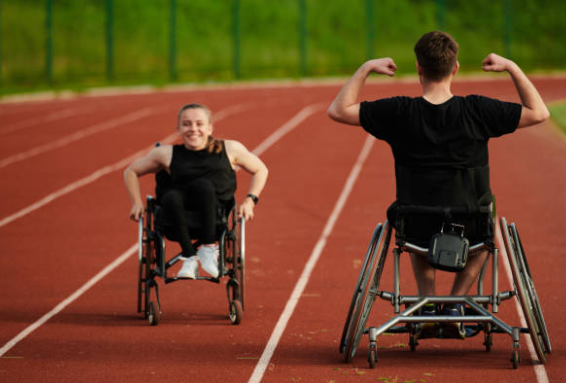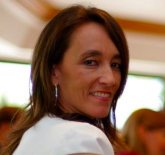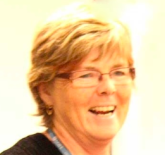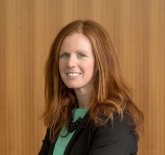A New Approach to Fully Accessible Physical Education

Previously published in Volume 82, Issue 2
Abstract
This qualitative research examines an innovative partnership in pre-service physical education teacher education between a faculty of education and an Abilities Centre, in Whitby, Ont., which was the site of the Para Pan Am Games in 2015. During a one-day visit to the facility, pre-service teachers in physical education were challenged to experience inclusive sport and physical activities and develop new approaches to inclusion. Students began to redefine ability in their programming and lesson planning, and most importantly, began to articulate ideals of fully inclusive physical literacy. Teacher candidates’ reflections were collected using auto-ethnography and digital videography. A final video of lessons learned demonstrated significant shifts in teacher candidate attitudes to inclusive physical education. By deconstructing previous knowledge based on binary notions of dis/ability, instructors and teacher candidates challenged ideas of mainstream versus adapted physical education and discovered new possibilities for fully inclusive physical education.
In the wake of the highly successful Para Pan Am Games in Toronto in 2015, important lessons emerge for teachers about full inclusion and focusing on student wellbeing through physical activity. In pre-service teacher education, the development of a philosophy of inclusion is essential for beginning teachers in order to make lessons accessible to all students. According to Zitzelsberger and Leo (2016), a definition of inclusion means that persons with and without disabilities participate together in community life. A foundation in inclusive thinking also requires a strengths-based approach, which DePauw and Doll-Tepper (2000) describe as, “[a] philosophical approach to implementing social justice in our schools and in society so that all persons are valued as unique contributing members of society” (p. 139). Letting go of the dis/ability binary concept helps pre-service teachers see how all students bring different assets or strengths (Iannacci & Graham, 2013).
Our schools and students continue to become more diverse. More specifically, physical educators are developing programs for a wide variety of students who may be physically challenged by disability, size or cultural attitudes to activity. Ontario recently released a new health and physical education curriculum, one that advocates acceptance and full inclusion, while it simultaneously challenges educators and parents to celebrate broader, more inclusive concepts of diversity.
Expect to teach students of different abilities
There has been much provincial debate and discussion regarding the idea that the “advancement of inclusion is facilitated by social constructivist perspectives that posit disability as a social phenomenon, produced by attitudes and constraints in unaccommodating environments, rather than pathology that is the problem of individuals” (Zitzelsberger & Leo, 2016 ). It is essential that teachers expect to teach students of different abilities and plan for them in physical education as they would for any other school subject (Robertson, 2014).
A required element of a philosophy of inclusion is the recognition that every student has the right to a positive and fully accessible experience in health and physical education.
One key challenge for full inclusion in physical education programs is that the physical educators need more experience, expertise and education in order to differentiate their programs to meet the needs of all students (Ko & Boswell, 2013; Kozub, Sherblom & Perry, 1999; Smith, 2004; Vickerman & Coates, 2009).
According to Ko and Boswell (2013), physical educators who undertake more inclusive practices find that they require a variety of equipment and need to find multiple ways to adapt the equipment to meet the needs of individual PE students. These include, for example: using distances that are shorter, nets that are at wheelchair level, and specialized balls or implements that have sound or colour to aid students with visual or hearing impairments. In addition, activities need to be designed that expand beyond traditional sports and games, to include less gendered, and less competitive activities. In some cases, physical and health education expectations will need to be changed through modifications and accommodations.
Fitzgerald (2012) discusses the need to include the voices of children with special needs in the design of activities, and the importance of incorporating their perspectives about what works so that these children can successfully participate in all activities. In addition, the environment needs to change to adjust the boundaries or to introduce buddy systems (Ko & Boswell, 2013). These adaptations, however, are not the only issues, as teacher attitudes are significant. Coates (2012) states that some student teachers, while they recognize that full inclusion is a desirable policy, have “a general feeling that achieving full inclusion in schools is an unrealistic target” (p. 353). As a result, there is a need to revise initial teacher education (Coates, 2012; Smith, 2004) to have clearer approaches to inclusive PE. In summary then, pre-service teacher education needs to address teacher attitudes and philosophies as well as practical approaches toward more inclusive HPE practices and environments.
New directions in PETE
In the faculty of education at the University of Ontario Institute of Technology (UOIT), new perspectives on full inclusion in physical education are a core element of the teacher candidates’ experiences. UOIT’s motto of “Challenge, Innovate, Connect” invites partnerships from a wide range of community organizations and businesses. As teacher educators, we encourage teacher candidates to challenge their own lens on inclusion, and to become more innovative in order to include all students and to connect with available resources in their own communities.
Inclusion partner: Abilities Centre
Over the past two years, UOIT has invited primary-junior (P/J) and intermediate-senior (I/S) teacher candidates to a rich and challenging learning experience at the Abilities Centre, a former hosting site for the 2015 Para Pan Am games events. This world-class facility in Whitby, Ont., remains an international model for inclusion. The Abilities Centre’s state-of-the-art, fully accessible programming provides significant opportunities for people of all ages and abilities to participate in physical activities. In 2013, the centre was awarded the IPC/AIKS Award of Distinction for Accessibility by the International Association for Sports and Leisure Facilities.
The new programs include not only sports, but labs where individuals can learn life skills, and participate in the arts, music and social activities with both able and disabled individuals. While not every community can have a facility of this standard, our faculty was fortunate to be able to allow teacher candidates to see the possibility of what “can be,” with the goal of inspiring them to think beyond perceived limitations and be creative and inclusive in their own philosophies and lesson plans.
The most significant part of the facility, as noted by teacher candidates, was not the physical building. While it is impressive, the attitude of full inclusion permeates through to the employees and members, with an integrated motto of “learning better together rather than apart.” The visit to the Abilities Center has become a key element in our pre-service program, helping new teachers build 21st-century attitudes and skills to create fully inclusive classrooms and physical activities.
The Abilities Centre mission and vision states, "At the Abilities Centre, we believe:
-
In equal access for all citizens of our community.
-
We learn how to relate to one another not by being separated, but by being together.
-
We will raise the level of discourse about full inclusion and how to achieve it. We will be a model, in Canada and beyond, for how to operationalize full inclusion and achieve it.
-
We can reflect true Canadian values of equality, acceptance, compassion and respect for the dignity and worth of everyone."
Further to this, the Abilities’ Centre vision statement includes goals to:
-
Educate and inform people, through research and development, on the need to celebrate the diverse backgrounds and conditions from which we all come.
-
Provide an environment of equality and understanding, thus enhancing the lives of people of all ages and abilities, and setting the standard to which all future facilities will be held.
-
Serve as an International Centre of Excellence in providing a framework for changing the social fabric of society and the way in which we view the integration of people of all ages and abilities.
-
The philosophy behind the Abilities Centre made it an ideal site for pre-service teacher learning and for research on pre-service teachers’ attitudes toward inclusion. Research was designed to investigate changes in their attitudes after experiencing a day at the Abilities Centre.
Methodology
REB Ethics review was obtained to study physical education teacher education. Students had signed permission forms for videography as part of their participation in the overall program, but were allowed to remove their video portions prior to completion of the final documentary.
Phase one: pre visit
During Physical Education classes at the faculty, students read recent literature about adapted physical education, wrote a personal reflection about their own experiences with disabled individuals and had a one-hour discussion of the literature during class time.
Phase two: visit
During the visit, videographers documented teacher candidates’ reactions and reflective comments. Individuals were asked to comment on whether the visit had changed their perceptions of the meaning of inclusion in physical education. At the end of the day, a focus group was convened to discuss lessons they had learned, and if the visit had had an impact of their attitudes toward understanding ability and disability.
Data collection—touring the facility
96 UOIT students in pre-service primary junior teacher education visited the Abilities Centre for the full-day session. They toured the facility and were able to experience firsthand what new models of accessibility really mean. Students arrived with anticipation, eager to begin the day with a full tour of the facility, followed by experience in the music, art and life skills labs. Guided by an individual with a disability and facility staff, they engaged for a three-hour session in accessible physical activity. These included sports and games that could be played simultaneously by able and disabled individuals, such as wheelchair sports, seated sports, and blindfolded goal ball.
The foundational methodology for this study reflects Griffin’s (2003) concept of the critical incident, that she describes as an event or teaching moment causing a teacher to pause and reflect deeply on what is happening. When teachers are encouraged to reflect on these critical incidents, it can promote teacher growth (Griffin, 2003). Employing this approach, the pre-service teachers were interviewed during their encounters with new philosophies at the Abilities Centre. Data for this study included their reflective comments through video interviews and through the recording of the focus group session. The pre-service teachers’ comments were transcribed and then analyzed for recurring ideas and themes (Cresswell, 2012). Interesting findings emerged which demonstrated changing perspectives.
Critical incidents and changing perspectives
The videography and reflective practice was a critically important component of their learning as they reflected on their experiences, and the trip to the Centre was used as a “critical incident” (Griffin, 2003) upon which they could deconstruct and reconstruct previously held notions of ability. Each of the games was played by abled and disabled individuals, together, and this provided a pivotal experience for them.
By playing together, abled and disabled pre-service teachers begin to deconstruct previous notions of “ability” and “disability” and open their minds to the possibilities of both in each of their future students. This is important in teacher development because even the label disabled implies a difference from the norm, when in fact, as persons, we are all differently abled individuals. A natural diversity of skills and abilities is expected among us, as we can do some physical activities well but not others. It can also be argued that this diversity of skills exists within individuals, as physical educators see on a daily basis with their students. Depending on factors such as fatigue, nutrition, motivation and mental health, one’s individual skills and performance can vary widely on a day-to-day basis.
Overall, the philosophy of the UOIT teacher education program aligned well with the vision and mission of the Abilities Centre, emphasizing that we learn best about our differences when we are together, rather than apart. But the inevitable discomfort of challenge is a necessary step in deconstructing previous knowledge, and in reconstructing new definitions of accessibility and inclusion. One cannot help but see synergy and worth in partnering Faculties of Education with local community resources. Sharing of knowledge and expertise between university faculty members, pre-service teachers in physical education, and practitioners in the field opened an ongoing dialogue about full inclusion in physical activity and sport. By helping new teachers build philosophies of full inclusion at the outset of their careers, we can challenge them to see worth and value in every level of ability. We ask them to shape a new 21st-century approach to full inclusion and make physical education available for every body.
Lessons learned on dis/ability: A new kind of teacher education experience
The Abilities Center Director Leo Plue states that, “People with disabilities often find barriers in the community, and even if a facility is physically accessible, often it is not attitudinally accessible…As a triple A building, [the Centre] serves all ages, all activities and all abilities. Whatever your goals or dreams are, the Abilities Centre will help you achieve them.”
This was a powerful message for our pre-service teachers. They began to challenge the binary concept of ability versus disability, and instead began speaking about full access, non-traditional forms of physical activity, and the idea that every student can fully participate in physical education. They challenged the standards of normativity that are often present in a culture that holds certain body types as ideal, and they began to realize that these arbitrary standards are often socially defined (Fitzgerald, 2005). Comments from the Physical Education pre-service teacher group indicated just how important the experience was. One teacher candidate said, “Originally my idea of inclusion was a bit juvenile, but this has really opened my eyes.”
Another stated, “The Abilities Centre sets a new bar for inclusion. The whole facility sets a new standard. There are facilities for music, art, life skills and fitness. The staff is inclusive and diverse. The building is inclusive but most importantly, the attitudes are inclusive.”
Teacher education for inclusive physical education must also include the examination of the affective and emotional responses teachers have to their own physical abilities, the physical abilities of others and physical literacy. For example, pre-service teachers may need to examine whether their ideas of what constitutes physical activity in school are broad or narrow. According to Weiss (2011) an intentional curriculum may not focus as much on traditional physical activities but would instead measure success if students show increased effort, improved physical activity and an improved desire to continue with physical activity after class.
This concept of inclusivity needs to also consider students of different sizes. Research indicates that physical education teachers may not be trained in how to create an inclusive climate for students of varied body sizes and they may have lower expectations for overweight children – seeing them as less able cognitively, socially and physically than thin children (Greenleaf, Martin & Rhea, 2008).
Conclusions
Pre-service teachers need opportunities to stretch beyond what is comfortable and try alternative physical activities that literally put them off balance. In this way, pre-service teachers begin to approach an understanding of what their differently abled and less-accepted students may experience in a traditional physical education class. It is through a teacher’s responsiveness to student needs that all children and adolescents will feel that they belong in physical education.
According to Vickerman and Coates (2009), “Inclusion is not a prescriptive set of expectations, but moreover it rests upon creativity, flexibility and responsiveness to the meeting of the needs of individual pupils” (p. 150). According to Fitzgerald (2005, 2012), faculties of education need to establish new definitions of accessible physical education and provide guidance and strategies for inclusion across the full health and physical education curriculum.
World-class facilities may not be available in every community, but we are always able to challenge previous notions of inclusion, develop innovative methods and technologies to make physical activity accessible, and connect teachers, parents and students with research-based knowledge about taking care of health and wellbeing, for life. Building inclusion begins with attitudinal shifts, and perhaps that is the approach we all need to take with the healthy and physical education curriculum.
The next generation of teachers can begin their journey understanding that everyone has a place in the fully inclusive classroom, and begin to plant the seeds of health and wellbeing—which are the right of every Canadian student.
Resources
To see a digital record of teacher candidate reflections please visit:
For more about teacher candidates’ time at the Abilities Centre visit:
References
Coates, J. (2012). Teaching inclusively: are secondary physical education student teachers sufficiently prepared to teach in inclusive environments? Physical Education and Sport Pedagogy, 17(4), 349-365.
Creswell, J. W. (2012). Planning, conducting and evaluating quantitative and qualitative research.New York: Pearson.
DePauw, Karen P. & Doll-Tepper, G. (2000). Toward progressive inclusion and acceptance: myth or reality? The inclusion debate and band wagon discourse. Adapted Physical Activity Quarterly 17(2), 135–43
Fitzgerald, H. (2005). Still feeling like a spare piece of luggage? Embodied experiences of (dis)ability in physical education and school sport. Physical Education and Sport Pedagogy 10(1), 41-59.
Fitzgerald, H. (2012). Drawing on disabled students’ experiences of physical education and stakeholder responses. Sport, Education and Society, 17(4), 443-462.
Fitzgerald, H., Jobling. A. & Kirk, D. (2003). Valuing the voices of young disabled people: exploring experience of physical education and sport. European Journal of Physical Education, 8(2), 175-200.
Greenleaf, C., Martin, S. B., & Rhea, D. (2008). Fighting fat: how do fat stereotypes influence beliefs about physical education? Obesity, 16(S2), S53-S59.
Griffin, M.L. (2003) Using critical incidents to promote and assess reflective thinking in pre-service teachers, Reflective Practice: International and Multidisciplinary Perspectives, 4(2), 207-220, DOI: 10.1080/14623940308274
Iannacci, L., & Graham, B. (2013). Reconceptualizing “special education” curriculum in a bachelor of education program: Teacher candidate discourses and teacher educator practices. Canadian Journal of Disability Studies, 2(2), 10-34.
Ko, B., & Boswell, B. (2013). Teachers' perceptions, teaching practices, and learning opportunities for inclusion. Physical Educator, 70(3), 223.
Kozub, F. M., Sherblom, P. R., & Perry, T. L. (1999). Inclusion paradigms and perspectives: A stepping stone to accepting learner diversity in physical education. Quest, 51(4), 346-354.
Oliver, M 1996. Understanding Disability: From Theory To Practice. Basingstoke: Macmillan.
Phelan, S. K. 2011. Constructions of disability: A call for critical reflexivity in occupational therapy. Canadian Journal of Occupational Therapy 78(3), 164–72.
Physical and Health Education Canada. (2015) Quality daily physical education: The facts. Retrieved from http://www.phecanada.ca/programs/quality-daily-physical-education/facts.
Physical and Health Education Canada. (2015). What is the relationship between physical literacy and physical education? Retrieved from http://www.phecanada.ca/sites/default/files/Physical_Literacy_Brochure_2010.pdf
Robertson, L. (2014). Body equity – a concept long overdue. National Eating Disorder Information Centre Bulletin, 29(4). October, 2015.
Smith, A. (2004). The inclusion of pupils with special educational needs in secondary school physical education. Physical Education and Sport Pedagogy, 9(1), 37-54.
Vickerman, P. & Coates, J. (2009). Trainee and recently qualified physical education teachers’ perspectives on including children with special educational needs. Physical Education and Sport Pedagogy, 14(2), 137-153.
Weiss, M. R. (2011). Teach the children well: A holistic approach to developing psychosocial and behavioral competencies through physical education. Quest, 63(1), 55-65.
Zitzelsberger, H. & Leo, J. (2016). A place for everyone. The International Journal of Health, Wellness, and Society 6(1) 65-74.2016, www.healthandsociety.com, ISSN 2156-8960










